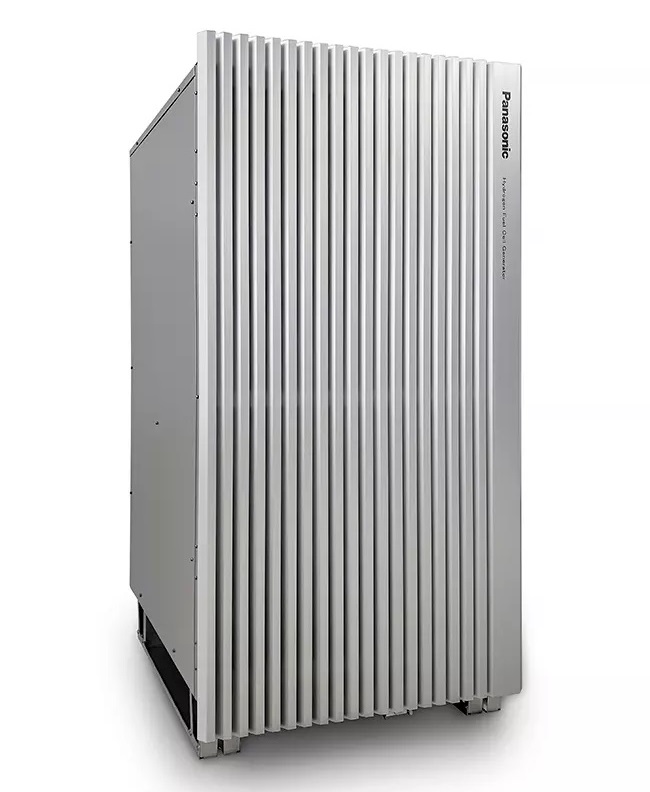Panasonic will commence commercial sales of hydrogen fuel cells in the Australian market from October 2024, in recognition of the growth in the country’s nascent green hydrogen industry.
Panasonic will bolster its commercial capabilities by launching the PH3, the latest version of its H2 KIBOU pure hydrogen fuel cell generator that generates DC power. With a maximum capacity of 10kW, the new PH3 model is double the capacity of its predecessor PH1 model (5kW) and reflects the company’s ongoing research and development in hydrogen fuel cell technology.
Australia has been selected as a focus region alongside Europe and China (outside of Japan) for the launch of the new PH3 model, highlighting Panasonic’s intent to strengthen its footprint in the domestic renewable energy industry, and scale up its hydrogen business around the world.
Delivering a renewable future
Ahead of the launch of its commercial offering in October, Panasonic has been engaging with stakeholders from across the Australian renewable hydrogen value chain. In 2022, Panasonic and ATCO Gas rolled out the first Australian field test of Panasonic’s 5kW fuel cell at the ATCO Clean Energy Innovation Hub (CEIH) in Jandakot, Western Australia.
Panasonic is also partnering with locally-owned energy solutions business, Optimal Group to develop applications for its stationary hydrogen fuel cell technology in the Australian market. The company is currently trialling a 5kW unit for commercial applications in preparation for the new PH3 model.
Paul Reid, managing director of Panasonic Australia, said the PH3 launch was a critical step in the company’s efforts to expand its portfolio of sustainability solutions for the Australian market.
“Panasonic has been conducting successful field trials of its hydrogen fuel cell technology in Australia since 2022, but this new solution will offer a highly flexible and scalable platform suitable for a variety of commercial and industrial applications across Australia,” said Reid.
“Our partnership with Optimal Group brings together two leaders in both the development and application of these technologies, to deliver on the vast potential of renewable hydrogen in Australia.”
Craig Dugan, CEO of Optimal Group, said that the partnership reflected the company’s mantra of providing Australian companies with comprehensive solutions to meet their energy needs.
“At Optimal Group, we are in the ‘problem-solving business’. Our mission is to deliver cleaner, more reliable energy solutions to our customers,” Dugan said.
“Hydrogen is going to play an enormous role in the decarbonisation of our energy needs, and we see hydrogen fuel cell technology becoming an increasingly viable solution for delivering a successful energy transition in Australia. We believe the Panasonic PH3 provides superior performance and lifecycle compared to other fuel cells in the market. Together with Panasonic, we’re excited about the possibilities that their new PH3 model will provide in the journey towards net zero and green energy reliability.”
The H2 Kibou ‘PH3’ – increased efficiency and flexibility

The new Panasonic PH3 model utilises a cogeneration system, which generates a maximum of 10kW of DC power, and approximately 8.2kW of heat through the chemical reaction between high-purity hydrogen and oxygen in the air. By connecting hot water storage, heat generated from the fuel cell can be converted into hot water (approx. 60⁰C).
The new model has also been designed to be flexible across a range of environments. Multiple modules of the PH3 (up to 250) can be connected together, and power output can be adjusted in 1kW increments between 4kW and 10kW. With maintenance access at the front, the PH3 can also be installed in small spaces and has been designed to operate in temperatures as low as -15⁰C and in altitudes as high as 1,000m.
Through rigorous testing, high efficiency rates have been attained for the PH3, including 57 per cent for electrical efficiency (DC, LHV), 47 per cent for heat recovery efficiency (LHV), and a total efficiency of 104 per cent[i]. This heightened efficiency results in reduced hydrogen usage, thus lowering operational costs. A 15-year[ii] overhaul stop period extends operational longevity and reduces life cycle costs.
References:
[i] The new product can recover condensation latent heat. Since its heat recovery rate includes condensation latent heat, its total efficiency is over 100%.
[ii] The operating life is dependent on the customer’s power generation plan. (Whichever comes first: energisation time 15 years, cumulative hours of power generation 100,000 hours and cumulative start & stop cycle 4,500 times)

